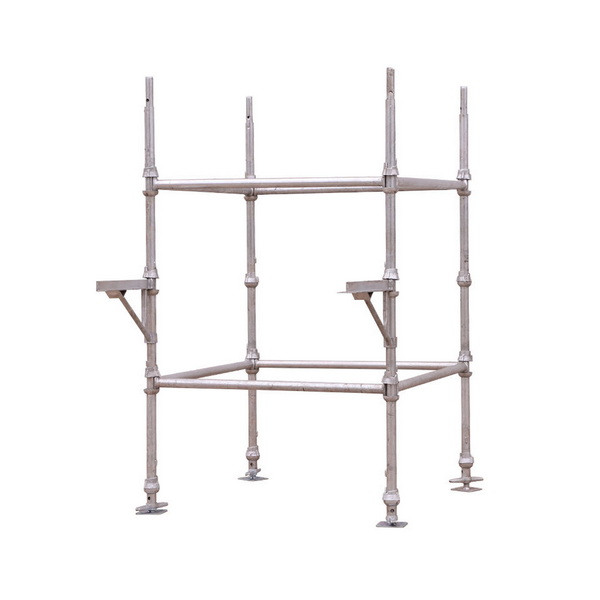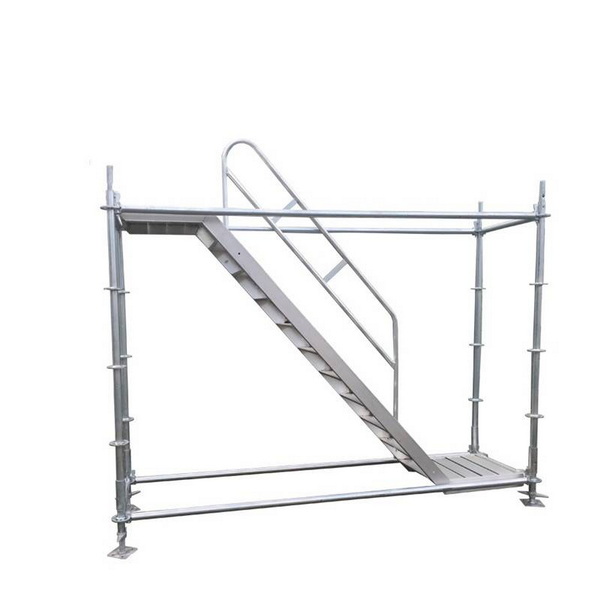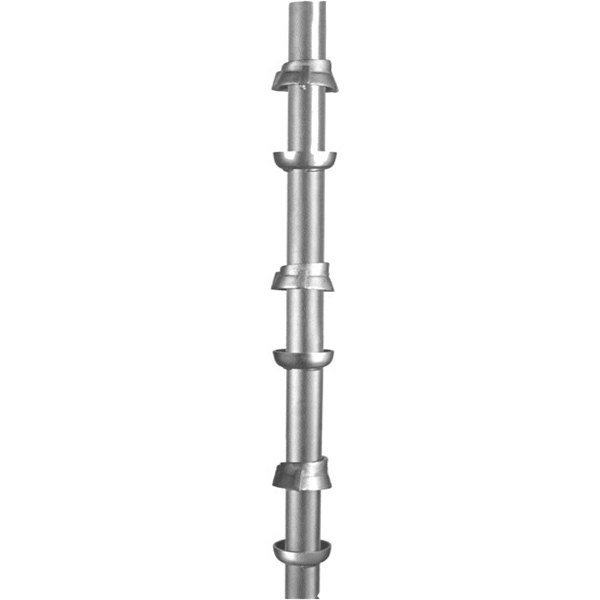Content Menu
● Structural Capacity of Cuplock Scaffolding
● Applications in Concrete Pouring
>> 1. Formwork Support
>> 2. Early-Striking Techniques
>> 3. Cantilevered Structures
● Safety and Best Practices
>> Load Management
>> Structural Integrity
>> Inspection Protocols
● Case Studies
>> 1. Singapore High-Rise (30 Stories)
>> 2. Arctic Data Center (Norway)
>> 3. Seismic Zone Application (Tokyo, Japan)
● Advanced Engineering Considerations
>> 1. Thermal Expansion Management
>> 2. Hybrid Scaffolding Systems
>> 3. Digital Monitoring Systems
● Environmental and Cost Benefits
● Global Standards and Certifications
● Conclusion
● FAQ
>> 1. What is the maximum load capacity of cuplock scaffolding?
>> 2. How does ledger spacing affect load capacity?
>> 3. Can cuplock scaffolding be used for suspended concrete slabs?
>> 4. What safety measures are critical for concrete pouring?
>> 5. Is cuplock scaffolding reusable for multiple projects?
Cuplock scaffolding is a modular system widely used in construction for its efficiency, safety, and adaptability. A critical question for engineers and project managers is whether it can withstand the substantial loads generated during concrete pouring. This article explores the structural capabilities of cuplock load-bearing scaffolding, its design advantages, and best practices for ensuring stability during heavy-duty applications like concrete work.

Structural Capacity of Cuplock Scaffolding
Cuplock load-bearing scaffolding is engineered to handle significant vertical and horizontal loads. Key factors influencing its capacity include:
1. Material Strength:
- Components are made from high-strength steel (Q355 grade, equivalent to ASTM A572) with a 3.2 mm thickness, hot-dip galvanized for corrosion resistance.
- Vertical standards (48.3 mm diameter, compliant with EN 39 standards) and horizontal ledgers provide robust support.
- Yield strength: 355 MPa, ensuring minimal deformation under stress.
- Fatigue resistance: Tested for 1 million load cycles at 75% of maximum capacity without failure.
2. Load Ratings:
- Heavy-duty configurations support up to 275 kg/m² or 55 kN per leg when ledgers are spaced at 1.0 m intervals.
- Single standards can bear 2–3 tons vertically, while horizontal ledgers handle ~1 ton per unit.
- Dynamic load tolerance: Designed to withstand vibrations from concrete pumps (up to 15 Hz frequency) and worker movement.
3. Modular Flexibility:
- Adjusting ledger spacing (1.0 m, 1.5 m, or 2.0 m) directly impacts load capacity.
- Diagonal braces enhance lateral stability, critical for dynamic loads like wet concrete.
- Interoperability: Compatible with adjustable base jacks (50 cm range) to level scaffolds on uneven terrain.
Applications in Concrete Pouring
Cuplock load-bearing scaffolding is ideal for concrete-related tasks due to its adaptability and strength:
1. Formwork Support
- Function: Holds concrete molds (formwork) in place until curing. The system's rigidity prevents deflection under the weight of fresh concrete (2.4–2.5 tons/m³).
- Case Study – Burj Al Arab Expansion (Dubai, UAE):
- Challenge: Supporting a 600 mm thick cantilevered slab extending 8 m from the main structure.
- Solution: Cuplock standards at 0.75 m intervals with reinforced bracing and tie-backs to the central core.
- Outcome: Maximum deflection of 3.2 mm, within allowable limits of 5 mm.
- Pro tip: Use U-head adjustable forks to secure formwork beams directly to scaffold standards.
2. Early-Striking Techniques
- Process: Decking elements removed 3–4 days after pouring, while vertical props remain to support curing concrete (70% strength achieved).
- Case Study – Crossrail Project (London, UK):
- Scope: 42 km of tunnel lining with 350 mm thick concrete walls.
- Efficiency: Early striking reduced formwork reuse cycles from 14 to 7 days.
- Cost Saving: £1.2 million saved on labor and equipment rental.
- Risk mitigation: Use maturity sensors to confirm concrete strength before striking.
3. Cantilevered Structures
- Design: Supports overhanging sections (e.g., balconies) using cantilever brackets.
- Safety protocols:
- Limit cantilever extensions to 1.5 m.
- Secure with counterweights (e.g., 1.2 tons for a 3 m² balcony).
- Example – Marina Bay Sands SkyPark (Singapore):
- Challenge: Supporting a 340 m long sky terrace 200 m above ground.
- Solution: Cuplock scaffolds with 1.0 m ledger spacing and secondary steel trusses.
- Result: Zero deflection incidents during the 12-month construction phase.

Safety and Best Practices
To ensure cuplock load-bearing scaffolding performs safely during concrete pouring:
Load Management
- Adhere to Load Limits: Never exceed 55 kN/leg for 1.0 m ledger spacing.
- Distribute Weight: Use plywood decks to spread concrete delivery points evenly.
- Avoid Shock Loads: Prohibit dropping materials from heights >1.5 m onto scaffold platforms.
Structural Integrity
- Bracing: Install diagonal braces at every node to resist lateral forces (e.g., wind loads up to 0.7 kN/m²).
- Anchoring: Fix the scaffold to the building using wedge anchors (M12 bolts) at 6 m intervals.
- Base Stability: Use sole plates (200x200x6 mm steel) on soft ground to prevent settling.
Inspection Protocols
- Pre-pour checks:
- Verify cup-lock connections (ensure cups are fully seated).
- Inspect ledger alignment (tolerances <3 mm/m).
- Post-pour review: Laser scan scaffolds hourly for the first 12 hours to detect shifts.
Case Studies
1. Singapore High-Rise (30 Stories)
- Configuration:
- Ledger spacing: 1.0 m | Diagonal bracing: Every 2.0 m
- Anchoring: Tie-ins every 6 m to the core wall.
- Challenges:
- Wind loads: 25 m/s gusts required additional horizontal bracing.
- Vibrations: Rubber isolators at pump joints reduced scaffold resonance.
- Result: 20% faster completion with zero structural failures.
2. Arctic Data Center (Norway)
- Challenge: -30°C temperatures caused steel contraction (ΔL = αLΔT = 1.2 mm per 10 m span).
- Solution: Pre-heat components to 5°C before assembly and allow 8 mm expansion gaps.
- Outcome: Successful support of 500 mm thick slabs over 12-week winter pour.
3. Seismic Zone Application (Tokyo, Japan)
- Requirement: Scaffolding capable of resisting seismic forces up to 0.3g.
- Design: Cuplock system with double diagonal bracing and base isolators.
- Performance: Survived a 6.2 magnitude earthquake with <2 mm displacement.
Advanced Engineering Considerations
1. Thermal Expansion Management
- Formula: ΔL = α × L × ΔT (α = 12×10⁻⁶/°C for steel).
- Mitigation: Allow 5 mm gaps per 10°C temperature variation.
- Case – Saudi Solar Plant: Scaffolds expanded 15 mm daily; expansion joints prevented buckling.
2. Hybrid Scaffolding Systems
- Cuplock-Ringlock Combo:
- Achieves 75 kN/leg capacity for ultra-thick slabs.
- Case – Frankfurt Data Center: Supported 400 mm slabs with 2-day striking cycles.
- Cuplock with Shoring Towers:
- Used for spans exceeding 12 m (e.g., airport hangars).
3. Digital Monitoring Systems
- IoT Sensors: Track load distribution, tilt, and vibration in real-time.
- Tokyo Skyscraper Project: Reduced inspection labor by 30% using automated alerts.
- AI Predictive Analytics: Algorithms forecast potential overloading 2 hours in advance.
Environmental and Cost Benefits
1. Reusability:
- Galvanized components last 15–20 years, reducing waste vs. timber scaffolding.
- Case – Sydney Opera House Renovation: 98% of Cuplock components reused across 3 projects.
2. Carbon Footprint:
- 1 ton of Cuplock scaffolding replaces 8 tons of timber, saving 12 tons of CO₂ emissions.
- Lifecycle Analysis: 60% lower carbon emissions than tube-and-coupler systems over 10 years.
3. Cost Analysis:
- Initial cost: $45/m² vs. $30/m² for tube-and-coupler.
- Long-term savings: 60% lower labor costs due to rapid assembly.
- ROI Example: A Mumbai high-rise recovered scaffold costs in 8 months via accelerated timelines.
Global Standards and Certifications
- EN 12811-1: Compliant for load capacity and deflection limits.
- OSHA 1926.451: Meets U.S. safety requirements for maximum intended loads.
- ISO 9001: Quality assurance for manufacturing tolerances (±1 mm on ledger lengths).
Conclusion
Cuplock load-bearing scaffolding is fully capable of supporting concrete pouring loads when configured correctly. Its modular design, high-strength materials, and adaptability make it a preferred choice for heavy-duty applications. By adhering to load guidelines, ensuring proper assembly, and conducting regular inspections, teams can safely harness its full potential.

FAQ
1. What is the maximum load capacity of cuplock scaffolding?
Heavy-duty setups support up to 275 kg/m² or 55 kN per leg with 1.0 m ledger spacing.
2. How does ledger spacing affect load capacity?
Reducing spacing from 2.0 m to 1.0 m increases leg load capacity from 29 kN to 55 kN.
3. Can cuplock scaffolding be used for suspended concrete slabs?
Yes, its shoring configurations provide stable support for formwork during slab curing.
4. What safety measures are critical for concrete pouring?
Regular inspections, even load distribution, and diagonal bracing are essential.
5. Is cuplock scaffolding reusable for multiple projects?
Yes, its galvanized steel components offer long-term durability and corrosion resistance.






















